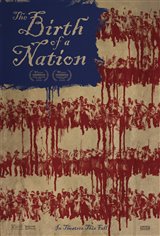The story of D.W. Griffith's The Birth of a Nation is a long and complicated one.
Released in 1915, the silent film was directed by D.W. Griffith. It tells the story of the Civil War and Reconstruction from the perspective that black people are inherently wicked and that granting them too many freedoms would destroy the very fabric of America.
In the movie, the Cameron family of South Carolina witnesses the rise of black militias seeking to rape white women and conquer the white man. These fictional, evil black men are accompanied by "carpetbagging" Republican politicians who want to further destroy the South.
The term "carpetbagger" refers to Northerners who moved to the South and their politicians who imposed strict sanctions following the Civil War. There was much more to the Civil War than abolitionism.
The North and South had many points of contention. State's rights, the size of the Federal government, and the balance of power. The South was the industrial bread basket of the United States, while the North was increasingly gaining power and influence with strong economic centers like New York City and Chicago. It was also political. The Democrats largely controlled the South while the Republicans were largely a Northern party. While the morality of slavery can hardly be debated anymore, the Civil War and the subsequent tensions between the North and the South cannot be considered a "good vs. evil" scenario.
Human beings are fallible, and easily corrupted by power. When the South lost, it lost hard and has yet to fully recover. To this day patriots of the South still utter the phrase "The South will rise again."
What makes The Birth of a Nation a racist film is that it chooses to ignore reality. It paints Abraham Lincoln, the 16th U.S. President and commander in chief of the abolitionist Union forces, as a friend to the Confederacy. The Birth of a Nation is not a battle of ideologies, but a battle of ethnicity. It suggests that the North and South reconcile to fight a common enemy — the black man.
So why is The Birth of a Nation so significant? Why do we still devote attention to it?
As a historical artifact, The Birth of a Nation is significant because it used the relatively new medium of filmmaking to convince people that black people really were evil. In the years following The Birth of a Nation, the Ku Klux Klan rapidly grew to more than 4 million members.
D.W. Griffith was the first director to popularize the close-up. This might seem like common sense, but remember, film was new. Also, film was following the traditions of the theater, where audiences expected to see an actor's entire body. By seeing the close up of an actor's face, audiences were able to feel emotionally connected to the characters like never before. This emotional manipulation was used for racist propaganda, but it was effective nonetheless and still used today. It is because of The Birth of a Nation that the technique of close ups remains in effect more than a century later.
Another technological stroke of genius of Griffith's is the use of parallel editing. The Klan's "rescue mission" is edited to build suspense. The audience is shown a black militia surrounding the home of a whie family. This footage is interspersed with the Ku Klux Klan desperately racing to the white family's aid. The suspense Griffith builds still works to this day. Next time you see this type of editing, remember it was Griffith who did it first.
The Birth of a Nation is a silent movie, but Griffith understood the power of music. This movie was the first commercially successful film to have its own original score. Prior to that, theaters had piano players improvise, according to what was projected on screen. The Birth of a Nation's score was another element of emotional manipulation designed to make the black characters frightening and the white characters likable.
The Klansmen ultimately "save the day" and defeat the "evil" black men. The idea of "heroism" was so powerful that it inspired a generation of southern men to either join or sympathize with the Ku Klux Klan. The Birth of a Nation is an example of just how powerful the medium of film can be. It can be used for good, or in this particular case, it can be used for evil.
A new movie titled The Birth of a Nation was released in 2016 as a completely different story from the point of view of the black people who suffered at the hands of white people. Nate Parker directed, co-wrote and stars in it as Nat Turner, a slave who grows up to be a preacher, but is forced by his owner to preach to other slaves that they should submit to their white owners. Having witnessed and experienced cruelty at the hands of white men, Nat starts an uprising in order to finally lead his people to freedom. ~Yanis Khamsi
